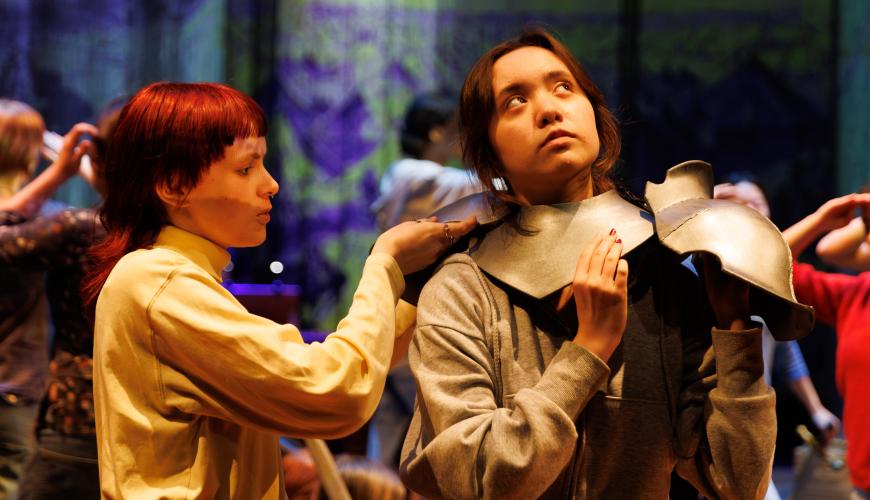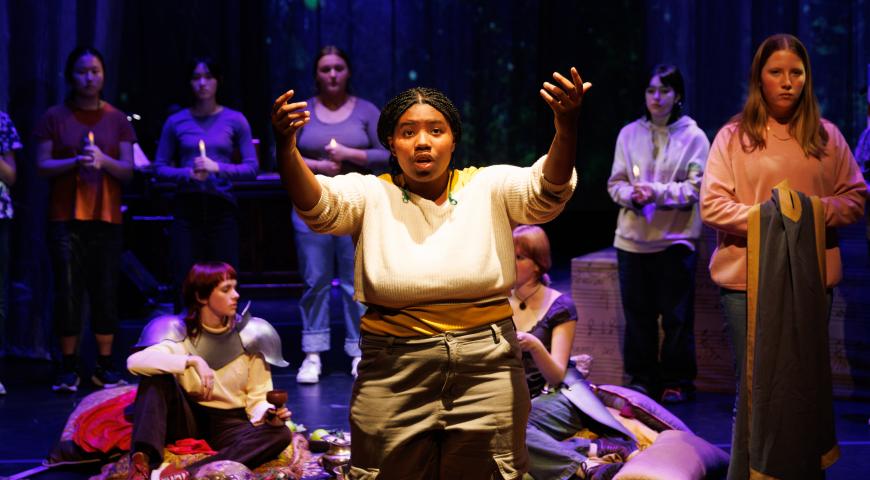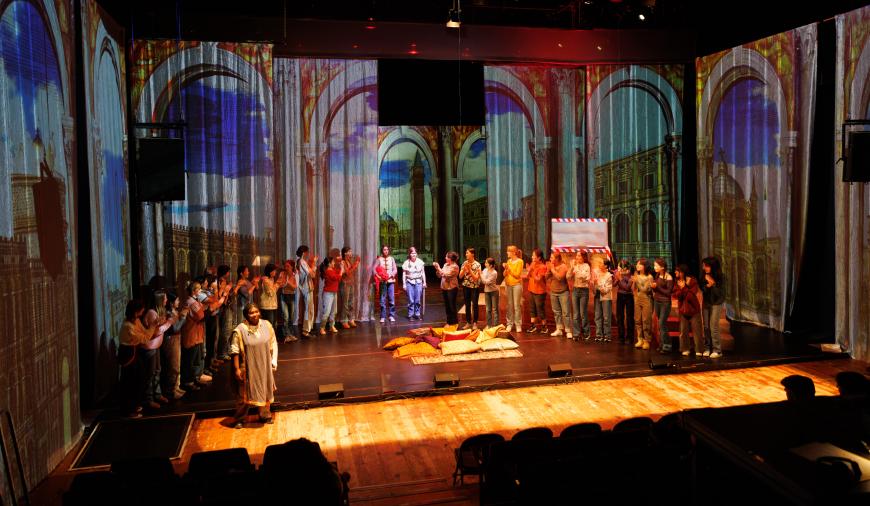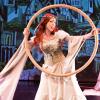
A couple dozen young women clustered excitedly around a magical box festooned with shipping tape, pulling out a letter and an old book. The letter was written 300 years ago by the orphans of the Pietà in Venice, urging its finders to open the book and perform the music inside. This turned out to be Juditha triumphans by the orphans’ teacher, Antonio Vivaldi.
The young women — the most accomplished singers of the San Francisco Girls Chorus (SFGC) — proceeded to perform a shortened version of the piece, the one surviving example of Vivaldi’s work in the oratorio genre.
The chorus’s two performances last weekend in the flexible and welcoming theater at Z Space were the culmination of years of work and planning (interrupted, of course, by COVID) by Valérie Sainte-Agathe, SFGC’s artistic director, in collaboration with Céline Ricci, known for directing Ars Minerva’s remarkable performances of little-known Baroque operas.

Juditha triumphans, based on a story in the quasi-biblical book of the Apocrypha, celebrates the heroism of the Hebrew widow Judith, who daringly enters the camp of the Assyrian enemy, seduces its leader Holofernes, and assassinates him, liberating her city and saving her people. For the original audience in 1716, the oratorio marked Venice’s recent defeat of the Ottoman forces at Corfu.
Perhaps because of Venice’s pride in the female orphans sheltered at the Pietà and brilliantly educated in music, all the solo roles in Juditha triumphans — even the overbearing and predatory Holofernes — were sung by young women.
In SFGC’s performance, each of the five lead roles was shared among two or three of the choristers. Although all the girls were dressed in contemporary street clothes, the characters were distinguished by a singer handing off a particular costume prop — a piece of armor, a cape — to the next singer in the role.
The oratorio’s music, in Vivaldi’s florid Baroque style, is brilliantly rich. Supported by an excellent small orchestra, the girls more than did justice to the vocally daunting arias and recitatives. The professional teaching and coaching that has made SFGC a standout educational and performing institution were in evidence here. Though young, the voices were true to the music and to the varying emotional affects of the score, from martial to contemplative and from prayerful to vengeful.

Accustomed to memorizing their choral performances, the singers seemed to have no trouble with the libretto’s complicated Latin. Nor did they shy away from the “adult” implications of the story — Holofernes’s lascivious abuse of power and Judith’s steely commitment to her bloody act and the liberation of her city.
The action took place in Holofernes’s tent on the battlefield, simulated by an enclosure of fabrics hanging from the high ceiling of Z Space. Animated digital projections by Peter Crompton magically transformed this space with images of bearded Assyrian emperors, Hebrew menorahs, planetary orbits, and at the climax, fiercely glowing entwined serpents.
Vivaldi’s score was reworked for this performance by scholar and theorbist Adam Cockerham (who has also produced the excellent scores used by Ars Minerva). The unusual instruments with which Vivaldi colored the music (viola d’amore, clarinets, mandolin) were eliminated in the interests of performability, and of course a number of the arias were cut. As a result, Juditha triumphans now exists in a workable if somewhat diminished version, which hopefully will help the oratorio circulate to other small venues.
On Saturday night, Z Space was rightly bustling with the proud parents and friends of these bold and accomplished young singers. Brave tutte!




